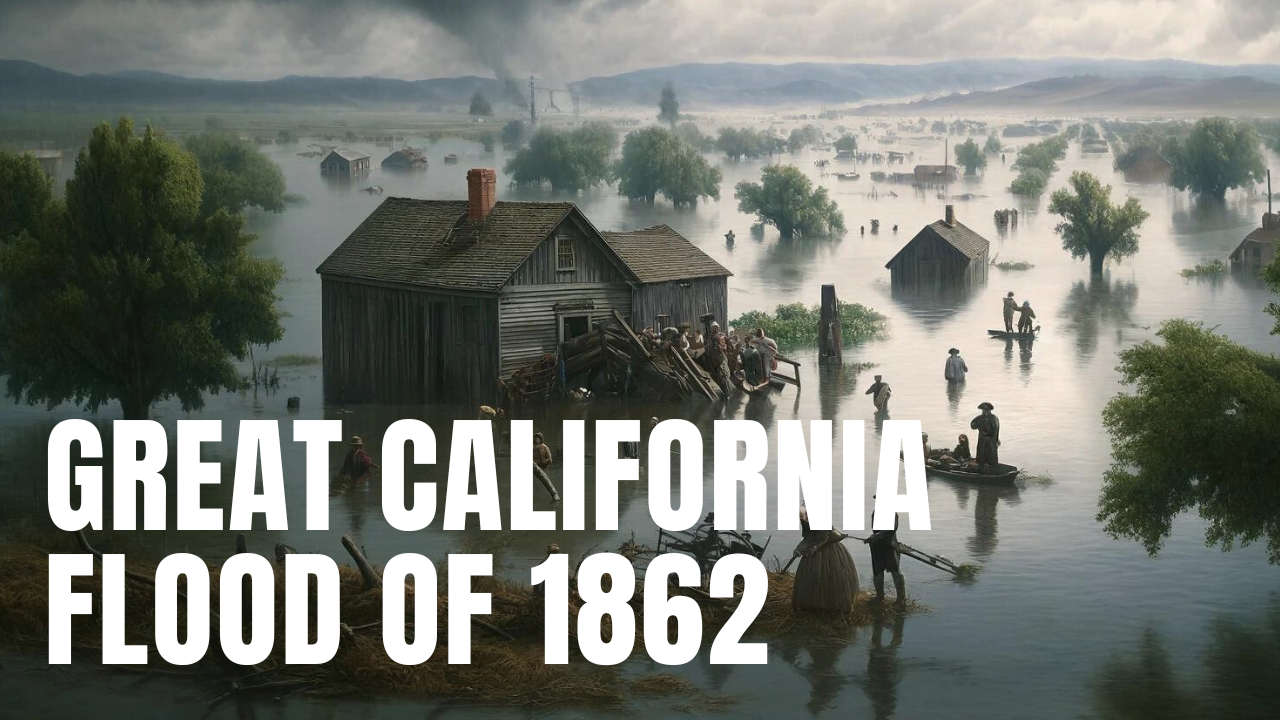The Great California Flood of 1862

A pounding rain took up on Christmas Eve of 1861, continuing unabated for the next 43 days of terror, panic and death, transforming rivers running down from the Sierra Nevada mountains into raging spillways that swept away entire communities and mining settlements. Overflowing rivers poured water into the state’s low-lying San Joaquin Valley, turning it into an inland sea 300 miles long, 20 miles wide and 30 feet deep, drowning hundreds of thousands of cattle, while the human death toll, although never accurately accounted for, most likely rose into the thousands.
Even Sacramento
Downtown Sacramento submerged under ten feet of brackish water, forcing the state legislature to move to San Francisco until the city dried out. Destroying 25% of all California real estate, by the time the storm was over, the state of California was bankrupt. While the Central Valley took the brunt of the storm, much of the remaining west coast of America suffered egregious flooding and loss of property and life, only to worsen in the spring when melting mountain snow-pack brought on a second round of torrential flooding.
Even Napa
Marysville, Santa Rosa, Auburn, parts of Sonora, Nevada City and Napa were all under water, while smaller towns like Empire City and Mokelumne City were simply erased from the face of the earth. Even in Los Angeles, the LA, San Gabriel and Santa Ana Rivers all flooded and merged, creating an inland sea 18 miles wide. Further inland in Riverside, the Santa Ana River completely washed away the small town of Agua Monsa near present-day Colton. In the Mohave Desert, Owens Valley was also devastated by floods, causing great misery among the Paiute People, since the game animals they relied upon for food had drowned and washed away. The storm also paused the Civil War effort in the Pacific Coast Theater, which had been heating up in the months leading up to the protracted storm.
The Road Ahead
Now that the Central Valley is home to six million Californians, on land producing crops worth $20 billion annually, meteorologists and climatologists have studied sediment deposits in widespread locations, which indicate the region has received similar storms every two centuries, going back at least over the past two thousand years. Caused by atmospheric rivers that build over the Pacific Ocean—generally a thousand miles in length and 250 miles wide—in a predictive model known as ARKstorm, which was updated and revised in 2022, scientists believe a repeat of the storm of 1862 is well overdue. Modeling a similarly relentless yet shorter storm lasting 23 days, such an event would cause $400 billion in property and agricultural losses, not to mention mass evacuations from low-lying areas, making the great California Flood of 1862, a long forgotten nightmare during the early history of the Golden State.
